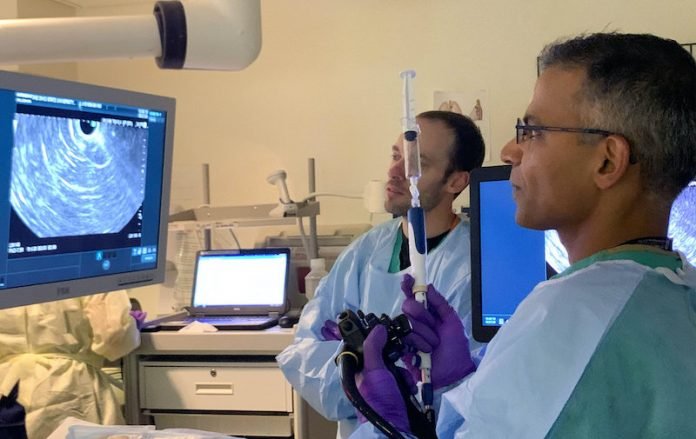
In a new study, researchers found a new “virtual biopsy” allows them to definitively diagnose cysts in the pancreas with unprecedented accuracy.
This means they can eliminate precancerous cysts and potentially save lives.
The research was conducted by a team at The Ohio State University Wexner Medical Center.
More than 45,000 Americans die of pancreatic cancer each year, making it the third-leading cause of cancer deaths.
Patients usually don’t have symptoms until the cancer is advanced, making early diagnosis and treatment a challenge.
According to the team, pancreatic cysts are common, and it can be difficult to distinguish the benign cysts from those destined to become cancerous.
A majority of patients get diagnosed with pancreatic cysts incidentally when getting a MRI or CT scan for another reason.
Nearly 40% of MRIs done of the abdomen reveal pancreatic cysts and the chance of having them increases with age.
The current standard involves testing the fluid inside the cysts. It correctly identifies them as benign or precancerous 71% of the time.
The researchers found that when the virtual biopsy is added to the standard of care, the diagnostic accuracy jumps to 97%.
The diagnostic method tested in the study provides doctors with a microscopic view of the cyst wall, which is produced by a tiny scope that emits laser light inside the cyst.
This allows doctors to determine almost immediately if it is precancerous.
The researchers are now working to train doctors at hospitals nationwide to perform this new diagnostic method and read the images provided by the scope to catch dangerous cysts and prevent pancreatic cancer for more patients.
They’re also working to develop artificial intelligence that will flag cases that are likely precancerous so doctors can act quickly.
They hope that they could save lives either by diagnosing pancreatic cancer early on before it develops into cancer, or they could prevent unnecessary surgery of a benign, harmless pancreatic cyst.
The lead author of the study is Dr. Somashekar Krishna, a gastroenterologist.
The study is published in Clinical Gastroenterology and Hepatology.
Copyright © 2019 Knowridge Science Report. All rights reserved.



